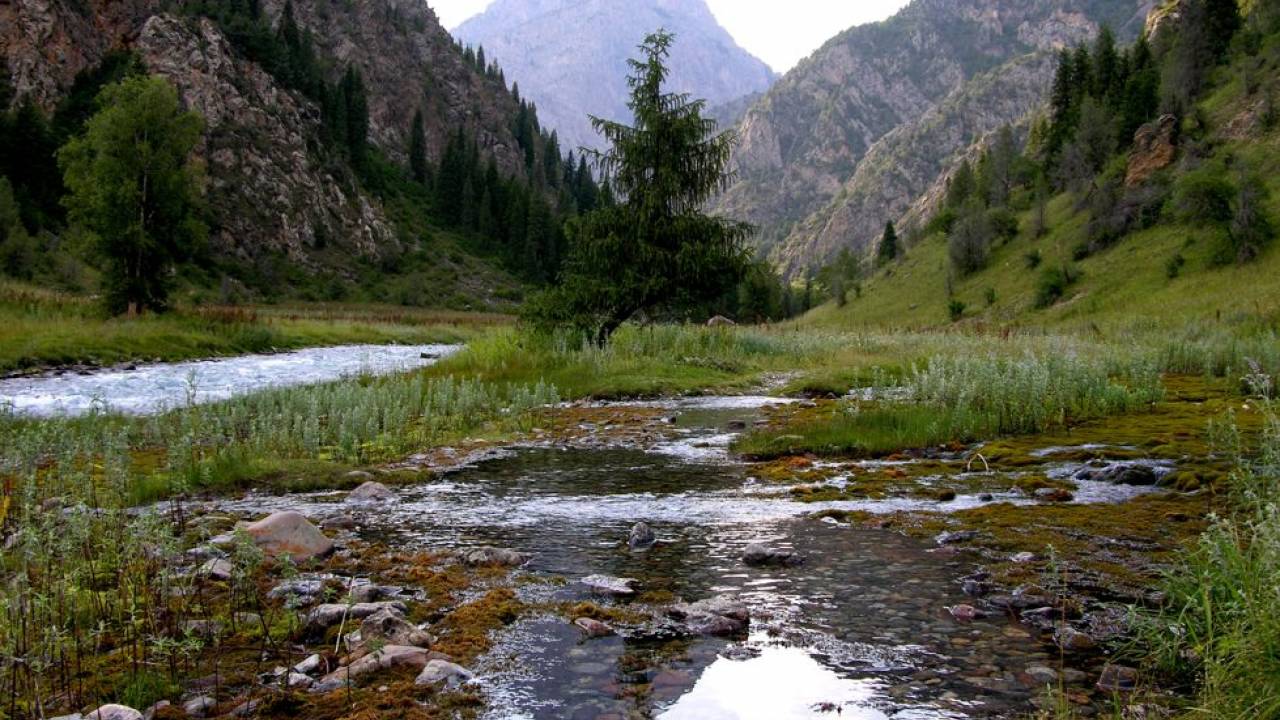
The territory of the Padysh-Ata State Reserve is one of the favorable regions for the compact habitat of various animal species and the growth of various plant communities.
In accordance with the Decree of the Government of the Kyrgyz Republic dated July 3, 2003 No. 405, the Padysha-Ata State Reserve was organized in order to preserve unique juniper forests, Semenov fir, listed in the Red Book of the Kyrgyz Republic, and biodiversity in general. IUCN Category - Ia (Strict Natural Reserve).
The total area of the reserve is 30,560 hectares, of which 15,846 hectares are a specially protected area, and 14,714 hectares are protected areas. Thus, the territory of the specially protected zone of the reserve is 15846 hectares, including the forested area - 4419.6 hectares, the unforested area - 1298.6 hectares, pastures - 2158.8 hectares, farmsteads - 1.1 hectares, other lands - 7967, 9 ha.
The reserve was organized on the basis of the Avletim forestry, where no research work was carried out. The latter were started only after the organization of the reserve.
Climate. The climate of the Padysh-Ata Reserve is characterized by moderately cold winters and hot summers. According to the Padysha-Ata hydrometeorological station, the average annual air temperature in July is +18.6 °С, and in January -3.4 °С. The transition of the average daily air temperature through 0° is observed on February 16-23 and December 13-30, the transition through 10° is observed on March 28-30 and October 20-29, respectively. Thus, the growing season lasts 204-218 days.
The last spring frosts are observed in the second decade of April, and autumn frosts sometimes begin in the second decade of October.
The average annual precipitation is 355 mm. The snow cover is stable, forms in the second decade of November and lies until mid-April.
Relief. According to the data of the South-Kyrgyz Expedition of the USSR Academy of Sciences, of the six types of morphological landscape in the reserve, there are only four types:
Desert lowlands;
Variegated lowlands;
Massive smoothed mountains;
Rocky Mountains (highlands).
Animal world. Wild animals located on the territory of the reserve are represented by different types of wild animals and birds. The terrain and climate of this area (the basin of the Padyshata river) are favorable for many representatives of the wild fauna, but anthropogenic factors, expressed in excessive and improper felling of conifers and grazing during the existence of the Avletim forestry (until 2003, Padysha-Ata forestry) significantly limited them number and distribution areas.
During the existence of the leshoz, livestock of the local population was grazing throughout the territory (the lands were used as a summer pasture). With the advent of spring, many representatives of the wild fauna left their inhabited places (Siberian ibex, roe deer, wild boar, and with them the snow leopard, wolf, Turkestan lynx). Cattle camps were located in the nesting places of birds (keklik, pheasant), as a result of which their number in the spring-summer counts decreased to a minimum.
Of the large mammals on the territory of the reserve, the snow leopard, Turkestan lynx, bear, ibex, roe deer, wild boar, wolf, badger and porcupine, mountain goats, fox, marmot, jackal, marten, weasel, ermine are common.
During the census, a few individuals of leopard, lynx and wolf were noted, this is due to the movement of the food supply. So, ibex, which make up the main diet of the snow leopard, went to the glaciers (due to the influence of the anthropogenic factor of disturbance). For a bear, the forage base is satisfactory (wild raspberries, currants, herbs and marmots).
Species listed in the Red Book: Tien Shan brown white-clawed bear, snow leopard, Turkestan lynx.
Vegetation. The vegetation cover of the Padysh-Ata Reserve is rich and diverse in terms of floristic composition, morphological structure and ecological groups of plants. A common feature of the vegetation cover of the reserve is a sharp predominance of trees and shrubs, juniper and fir forests are especially unique.
The main massifs of juniper forests are common in the river valleys: Ak-Sai, Ergesh-Sai, Kaiyndy-Bulak, Boru-Bulak, Orobashi, Komur-Sai, Kok-Dobo, Mazar-Sai, Taldy-Bulak, Ak-Tash, Bektemir. There are mainly three types of juniper growing here: hemispherical, Zeravshan and creeping. The most dense thickets are occupied by hemispherical juniper. These beautiful forests from afar attract the attention of a person with their beauty, their
It should be noted that due to its geographical isolation, richness of biodiversity, especially the unique juniper forest and Semenov fir, listed in the Red Book of the Kyrgyz Republic, Padysha-Ata Reserve deserves to become the standard of natural territorial complexes of the Western Tien Shan.





















